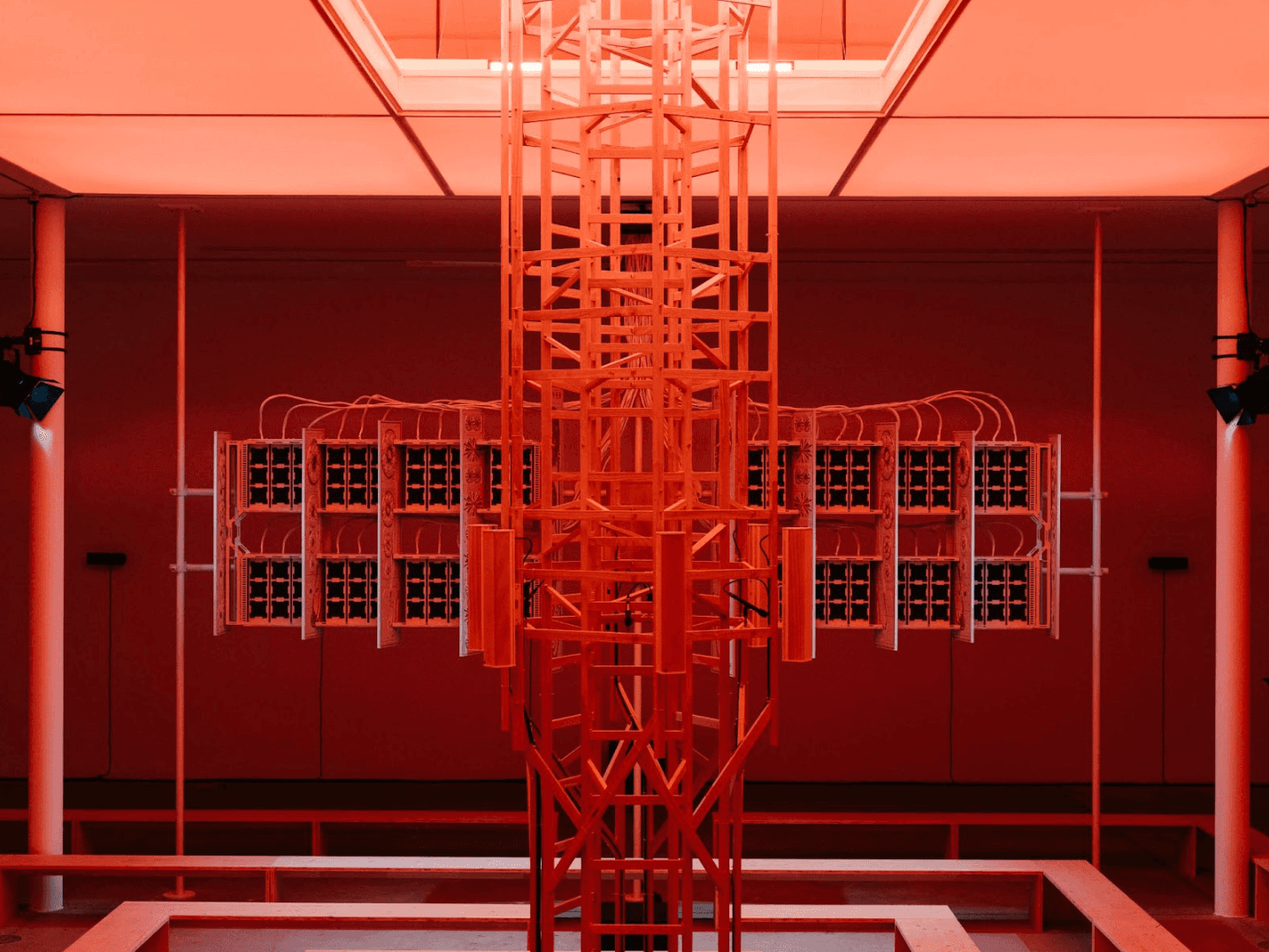A Journey Through Four Worlds at Hamburger Bahnhof
Can a museum rearrange your inner world? Step inside Hamburger Bahnhof’s quartet of mind-altering exhibitions and prepare to be undone
Aug 7, 2025
It’s not every day you walk out of a museum and feel like the ground beneath you has shifted. But right now, Hamburger Bahnhof is hosting not just the most ambitious exhibition of the year – it’s one of the most emotionally and sensorially profound experiences I’ve had in a long time. The last time I felt so moved was during Poetics of Encryption at KW. But here, in this former train station turned sanctuary for contemporary art, the exhibitions feel more like portals than shows. There are four of them, and each one could stand alone as a landmark. Together they hum, clash, echo, and vibrate. Here’s how the journey unfolds:

Klára Hosnedlová’s CHANEL Commission: embrace.
Step into the vast, echoing Historic Hall and you’re greeted by what feels like a post-utopian fairy tale made tactile. Klára Hosnedlová, the inaugural CHANEL Commission artist, doesn’t just fill the space – she weaves it shut and opens it up again. Here, slabs of concrete echo the sidewalks of her Czech hometown, while towering tapestries of hemp and flax drape like skins from the heavens. Glass glints. Iron looms. Delicate embroideries of gestures are tucked like secrets into sand-coated sculptures.

Imagine brutalist nostalgia softened by flax, pierced by embroidery, and whispered through speaker stacks rescued from Berlin’s defunct techno clubs. It’s a world caught between memory and prophecy. Moravian folk vocals tangled with church bells and Czech rap, transmitted through ghostly, dented speakers. It’s industrial, but deeply emotional. Utopian, but scarred. And it embraces you if you let it.

Ayoung Kim’s Many Worlds Over.
If embrace pulls you back into collective memory, Ayoung Kim hurls you into a kaleidoscopic near-future, and not just to look, but to play. In this fractured, speculative Seoul, two delivery riders, Ernst Mo and En Storm, glitch through infinite timelines as they try to escape an oppressive AI delivery app named Dancemaster.

There’s something deliciously uncanny about this universe: LED-masked mannequins frozen mid-collapse, helmets with wires dangling like cybernetic intestines, and webtoon wallpapers blown up to mural size. Kim’s love for queer storytelling and Girls’ Love comics pulses through the room. Meanwhile, visitors can sit down and play their way through the simulation, turning spectators into co-authors of the narrative. It’s like falling into a neon scored video game.

Kim's gift is in making the speculative feel intimate, like déjà vu in a dream you desperately try to remember after waking up. Every screen, every helmet, every expression reminds you: reality is not a single route. It’s a tangled delivery map with too many destinations to count.

Toyin Ojih Odutola’s U22 – Adijatu Straße.
From Kim’s speculative Seoul, we ride the imaginary U-Bahn line U22 straight into the poetic heart of Adijatu Straße. Nigerian-American artist Toyin Ojih Odutola draws this world, stroke by obsessive stroke, using graphite, chalk, charcoal, and ballpoint pen like an architect of emotion.

Here, the exhibition is a station. A stop along a 25,000-kilometer route through memory, migration, colonial history, and fiction. Voices echo across rooms, announcing arrivals and departures. Portraits watch you as you pass. Berlin’s subway melds with Nigerian naming traditions. And somehow, it all feels... familiar?
There’s a quiet resistance in the softness of Ojih Odutola’s hand, a kind of political tenderness. Her reinterpretation of portraiture refuses historical hierarchies and her refusal to let characters stay in one place mirrors our own fragmented narratives. This is drawing as diaspora, as mythology, as reclamation. Stand still long enough in Adijatu Straße, and you start to wonder if you’ve lived here before.

Delcy Morelos’s Madre.
And then you see the Madre. If the other exhibitions stretch the mind and eye, Morelos’s work sinks into your body. Quite literally. Constructed from cinnamon-scented soil, hay, chia seeds, and clay, this is not an installation, it’s an offering. Warm, dark, fragrant, and maternal, Madre doesn't ask to be observed. It asks you to come close.

Step inside and you’re enveloped by curved walls of earth, spaces that feel like wombs or tombs, or maybe both. There’s a narrow tunnel called Profundis, which you can’t enter, but it calls you into its darkness anyway. The scent of the materials makes you pause and close your eyes as you take a deep breath and lingers on your clothes long after you leave. The installation vibrates with Indigenous Andean and Amazonian cosmovisions, with a kind of ancient knowledge that speaks not through language, but through smell, texture, and silence.
Morelos reminds us that earth is not just substance. It's a memory, a witness. It’s alive. And she dares us to remember our own closeness to it – not just as visitors, but as descendants of something much older than history.

What makes this collection of exhibitions at Hamburger Bahnhof so extraordinary is not just their scale or ambition, but the way they speak to each other. From embroidered fragments and delivery apps to speculative subway stations and sacred soil, these four artists are drawing new cartographies of memory, identity, resistance, and imagination.
Walk the concrete paths of embrace, get lost in the timelines of Many Worlds Over, wait for the next train at Adijatu Straße, and breathe in deeply with Madre. Don’t hesitate to embark on a journey through Hamburger Bahnhof this summer – and see where it takes you.





















